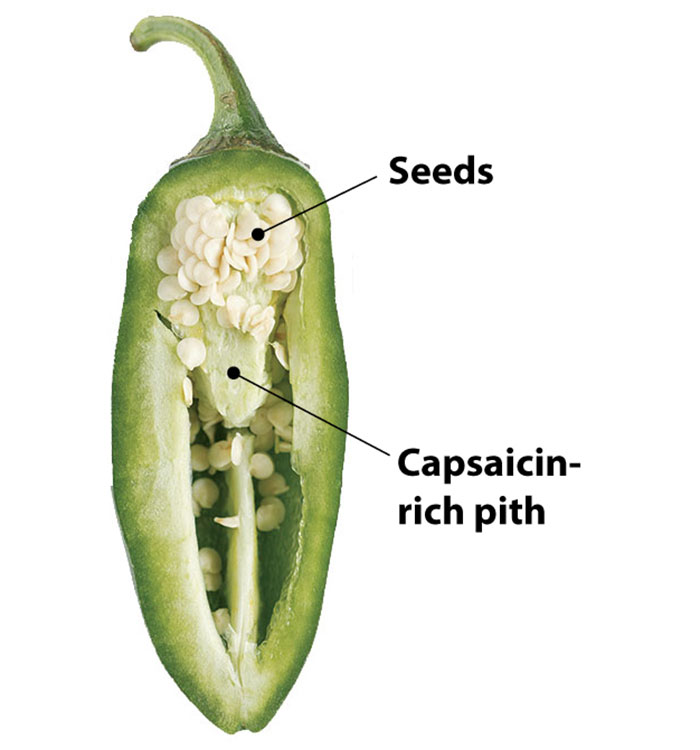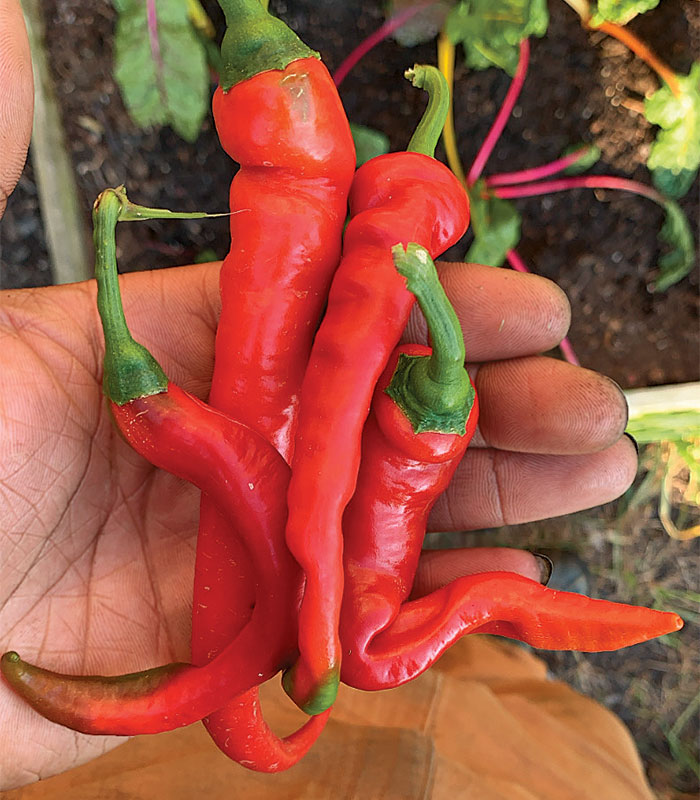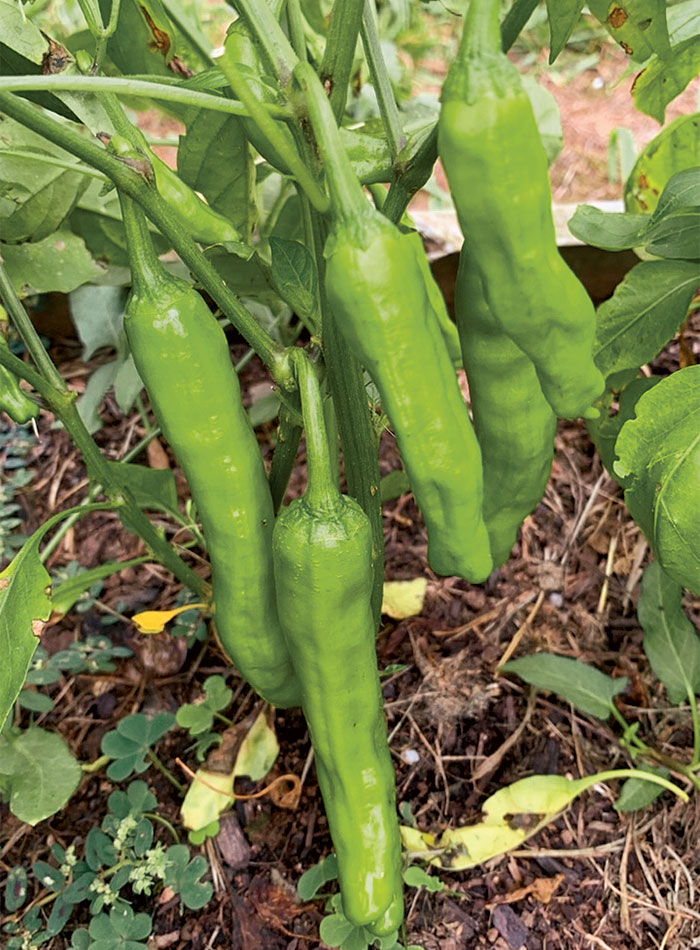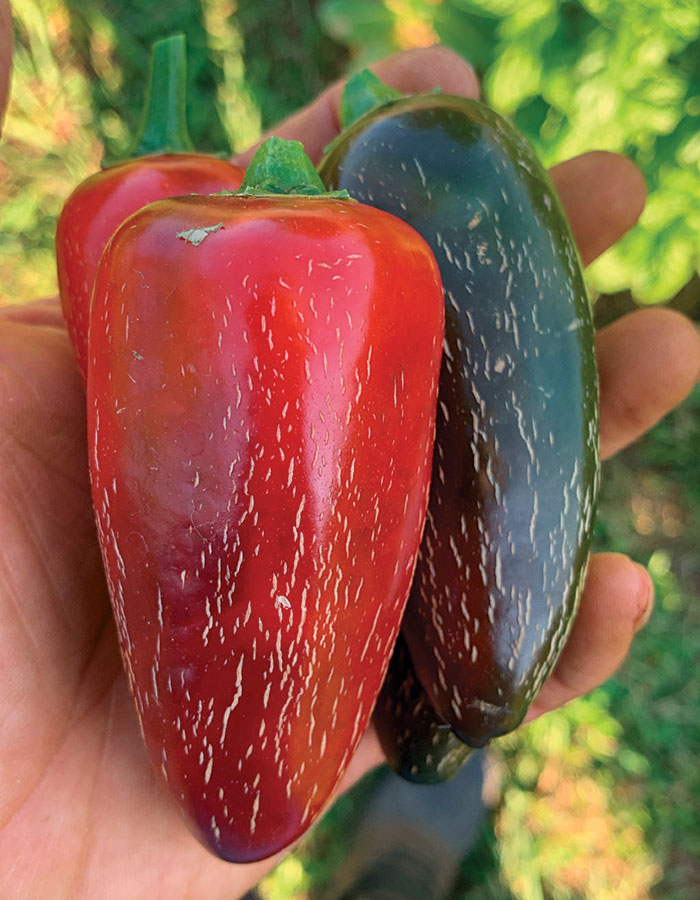The Best Hot Pepper Varieties to Grow
Add some kick to your homegrown menu with these mild to super-spicy favorites

Who doesn’t want a little more spice in their life? When it comes to growing edibles, hot peppers are among the easiest and most savory options to put on the menu. If that weren’t enough, the fruit is beautiful, coming in various shades of green, red, orange, and yellow. These well-packaged pops of flavor are a must-have in my own vegetable garden and were so in the CSA plots I tended for clients in years past. There are many different hot pepper varieties to choose from. Over the years, I have identified the following as among my favorites in the categories of mild, moderate, and hot.
Learn the secret to growing great hot peppers
Mild peppers: Flavorful fruit with little to no heat
‘Jimmy Nardello’
Scoville heat units: 0
Days to germinate: 7 to 10
Days to maturity: 80 to 90 from transplanting
Plant size: 24 inches tall and 18 inches wide
‘Jimmy Nardello’ is a striking pepper that was brought to the United States from Italy in 1887 by the Nardello family. Skinny, elongated, and red, each pepper is packed with flavor and grows 6 to 12 inches long. ‘Jimmy Nardello’ is one of the most versatile peppers on this list, as it can be eaten raw in salads as well as fried or grilled. When dried and ground, it also makes great paprika.
‘Corno Di Toro Rosso’
Scoville heat units: 0 to 500
Days to germinate: 7 to 10
Days to maturity: 75 to 95 from transplanting
Plant size: 24 to 36 inches tall and wide
‘Corno Di Toro Rosso’ is another excellent Italian pepper. Its name translates to “red bull horn.” It is a sweet heirloom pepper with a little heat and is a staple in many Italian kitchens. Fruits are bright red and between 8 and 12 inches long. An extremely versatile pepper, it is great raw, stuffed, or grilled.
‘Shishito’
Scoville heat units: 100 to 1,000
Days to germinate: 10 to 14
Days to maturity: 75 to 95 from transplanting
Plant size: 24 inches tall and 18 inches wide
‘Shishito’ is a popular Japanese pepper whose name translates to “lion head pepper.” Small, wrinkled, bright green, and packed with flavor, the 3-inch-long fruit turns red when fully matured. The taste of this pepper can be described as sweet and mildly spicy. It is often used for tempura and other traditional Japanese dishes, but it can also be eaten raw in salads or grilled.
Moderate peppers: A bit of heat to kick things up a notch
‘Red Cherry Hot’

Scoville heat units: 3,000 to 5,000
Days to germinate: 10 to 21
Days to maturity: 75 to 85 from transplanting
Plant size: 24 to 30 inches tall and 24 inches wide
This small, red, round, and slightly flattened hot pepper gets its name from its visual similarity to cherries. Fruits are approximately 1-1/2 to 2 inches in diameter. In terms of heat, ‘Red Cherry Hot’ is just behind jalapeño peppers. It can be prepared in many ways, including fried, garnished, and stuffed. Also, because of its thick skin, it is an excellent pepper for pickling.
‘Jalafuego’
Scoville heat units: 4,000 to 6,000
Days to germinate: 10 to 15
Days to maturity: 80 to 90 from transplanting
Plant size: 18 to 36 inches tall and 12 to 24 inches wide
Jalapeño peppers hail from Mexico and are one of the most popular pepper types in the world. They are described as moderately hot and are a must-have in any salsa recipe. Pods are typically between 2 and 3 inches long, but they can grow to be much larger. In recent times, new jalapeño selections have been developed to be larger and sometimes hotter. One example of this is ‘Jalafuego’. Considered an improvement to the original jalapeño, ‘Jalafuego’ plants are high yielding and have fruits measuring 3½ to 4 inches long. These larger fruits are great for stuffing. However, this pepper is still versatile enough to be dried, smoked, or used in salsa.
‘Poblano’

Scoville heat units: 1,000 to 1,500
Days to germinate: 8 to 12
Days to maturity: 75 to 95 from transplanting
Plant size: 24 to 30 inches tall and 12 to 24 inches wide
The ‘Poblano’ pepper originated in the state of Puebla in Mexico and is a popular ingredient in many Mexican and Southwest dishes. The fruit grows to approximately 3 to 6 inches long and is dark green with thick walls. When dried, poblano-type chili peppers are referred to as “anchos.” This pepper has a rich, earthy flavor that is also sweet and is an excellent choice for use in tacos, enchiladas, and burritos.
Hot peppers: Unmatched intensity with big heat
‘Scotch Bonnet’

Scoville heat units: 100,000 to 350,000
Days to germinate: 7 to 21
Days to maturity: 90 to 100 from transplanting
Plant size: 24 to 36 inches tall and 18 to 24 inches wide
‘Scotch Bonnet’ originates from the Amazon River basin. It has become synonymous with the Caribbean, as it is a staple in many dishes from that region. Its most popular use is in Jamaican jerk sauce, which can be used on chicken, goat, and pork. The pepper is very tasty and is described as sweet with a hint of tomato, cherry, and apple. Pods are round and approximately 1½ to 2 inches in diameter.
‘Sweet Cayenne’

Scoville heat units: 30,000 to 50,000
Days to germinate: 10 to 15
Days to maturity: 70 to 93 from transplanting
Plant size: 18 to 24 inches tall and wide
Cayenne peppers are among the most popular types of peppers in the world and are believed to have originated from French Guiana, the smallest country in mainland South America. The bright red fruits, which are generally between 3 and 5 inches long, are very versatile and can be used for almost any dish. They are great with eggs, poultry, seafood, cheese, tacos, curries, and in hot sauces and plenty of other foods. The pods can be dried and ground into powder. Like jalapeño peppers, cayenne peppers have been improved to serve a particular purpose. ‘Sweet Cayenne’ pepper is one of many recently developed varieties and is a great addition to stir-fries. It has the same look and feel as the original cayenne pepper, but with less-intense heat.
‘Trinidad Moruga Scorpion’
Scoville heat units: 1,200,000 to 2,000,000
Days to germinate: 10 to 15
Days to maturity: 90 to 100 from transplanting
Plant size: 36 to 48 inches tall and 18 to 24 inches wide
The ‘Trinidad Moruga Scorpion’ pepper, simply known as the Moruga Scorpion, originates from the tiny beach village of Moruga, Trinidad. It comes with a reputation of once being the hottest pepper in the world, having been surpassed only by ‘Carolina Reaper’. This pepper is revered by the locals of Trinidad for its flavor—hot, yes, but also fruity and sweet. The pepper is used to add some serious heat to popular Trinidadian dishes such as callaloo, a tasty combination of dasheen, okra, carrots, pumpkin, coconut milk, and fresh herbs. Many Trinidadians make a flavorful hot sauce combining the Moruga Scorpion in a food processor with garlic, lemon, vinegar, salt, and chadon beni.
Hot peppers are often loved or feared. But where does the heat come from?


The answer is capsaicin, a chemical compound found in hot peppers. Capsaicin is responsible for the burning sensation one gets when consuming a hot pepper. This compound is measured by Scoville heat units, or SHU. The Scoville scale, created in 1912 by Wilbur Scoville, ranges from 0 (bell peppers) to over 1,500,000 (‘Carolina Reaper’).
The membrane, or pith, around the seeds of a hot pepper contains the greatest concentration of capsaicin. Removing the pith and seeds before eating will reduce some of the intensity. To protect yourself while cutting a hot pepper, wear protective gloves, avoid touching any part of your body (especially your face), and wash your hands thoroughly after handling and discarding the seeds.
Keegan Clifford is a lifelong vegetable gardener who grows beautiful produce in his garden in Middletown, Maryland.
Photos, except where noted: courtesy of Keegan Clifford.
Seed sources
- Baker Creek Heirloom Seeds, Mansfield, MO, 417-924-8917, rareseeds.com
- Botanical Interests Broomfield, CO, 877-821-4340, botanicalinterests.com
- True Leaf Market, Salt Lake City, UT, 801-491-8700, trueleafmarket.com











Comments
Log in or create an account to post a comment.
Sign up Log in